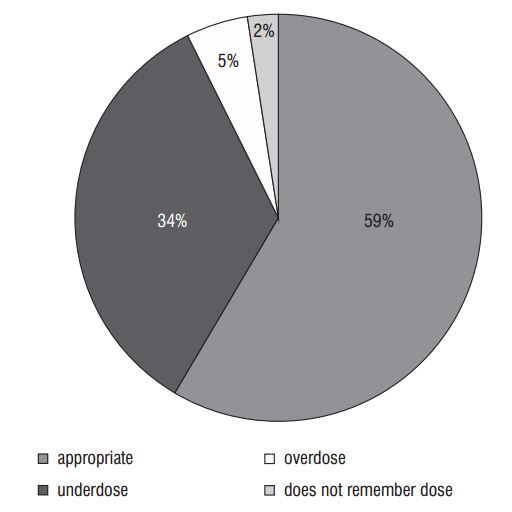Polish pediatric center: 40 percent took vitamin D
Vitamin D supplementation in theory and daily practice – implementation of new updated Polish recommendations on the example of one pediatric centre
Barbara Wasyl-Nawrot, Małgorzata Wójcik, Krzysztof Kasperczyk, Jerzy B. Starzyk
Pediatr Endocrinol Diabetes Metab 2018; 24 (4): 174-178
DOI: https://doi.org/10.5114/pedm.2018.83363
📄 Download the PDF from VitaminDWiki

Note: 60% (not shown in pie chart) did not get ANY vitamin D supplementation
Introduction: According to updated evidence-based national recommendations which have been published recently vitamin D deficiency remains still highly prevalent in Poland and requires supplementation.
Aim of the study: was to evaluate the effectiveness of implementation of the new national recommendations into daily practice.
Material and methods: An analysis of medical records of 100 children aged from 6 months to 14 years admitted to the Department of Pediatrics, Hospital in Brzesko, Lesser Poland, from 1st July 2018 to 31st August 2018.
Results
41% patients declared vitamin D supplementation.
Among patients under 1 year of age 3 (60%) received recommended supplementation of 400-600 IU daily,
in the group of 1-11 years old 15 (19.5%) used a 600-1000 IU dose daily, 13 (17%) < 600 IU/daily, and 2 (2.5%) > 1000 IU daily, 1 patient did not remember the dose.
In the group >11 years of age 6 (37.5%) supplemented 800-2000 IU/day, 1 (6.3%) less than 800 IU, no one overdosed supplementation. In the group without supplementation, there were 3 patients with a de-creased 25(OH)D blood serum level (< 20 ng/ml).
Mean 25(OH)D serum level was significantly higher in the group with vitamin D supplementation (42 vs. 33.9 ng/ml; p = 0.0006).
There was no significant difference between mean 25(OH)D level in patients receiving adequate (40.5 ng/ml), to low (43 ng/ml), or to high vitamin D doses (49 ng/ml).
There was no significant correlation between vitamin D dose and the 25(OH)D serum level [R = (–) 0.24, p > 0.05)].
Conclusions
There is an urgent need for physicians to provide an education concerning general rules of vitamin D supplementation, because the pre-sent guidelines of the vitamin D supplementation are not implemented well enough.
